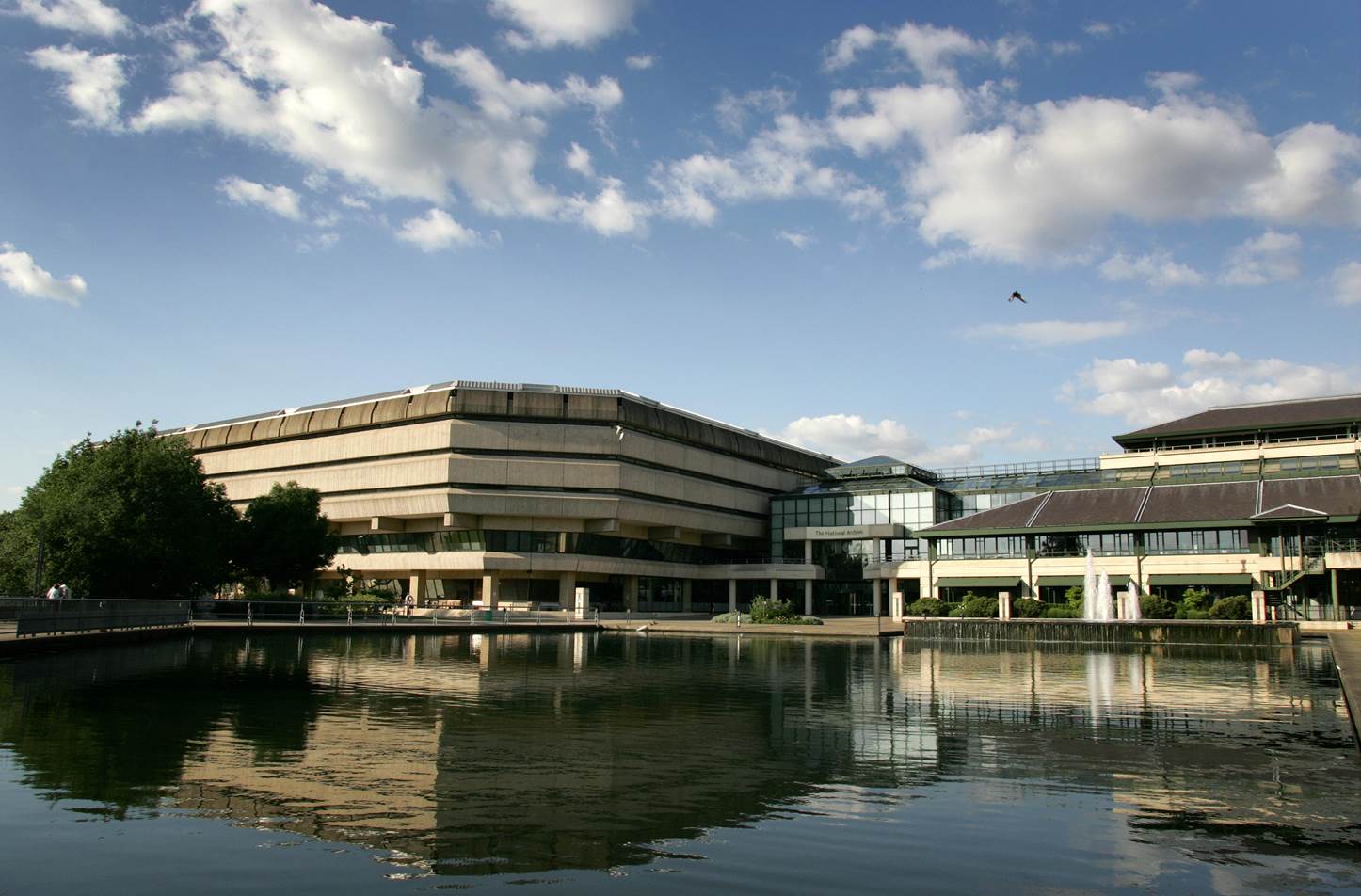The Government Transformation Strategy set out an array of ambitions for a three-year timeframe that has now reached its end. A range of expert commentators discuss whether its aims have been achieved.
Credit: Pixabay
Three years ago, the Cabinet Office published its Government Transformation Strategy. The intervening years have certainly seen a transformation of government, if not of the digital-focused kind the strategy discussed. Ben Gummer (pictured below right), the minister who wrote its foreword, lost his seat in the June 2017 general election and the hung parliament that resulted spent much of its existence arguing about Brexit, leaving little political bandwidth for other issues.
Despite that, some progress has been made against the strategy’s goals, which were organised into five categories: digital services, tools and processes, skills and culture, shared components and platforms and use of data. Henry Rex, head of the central government programme at trade body techUK, praises work to improve accessibility of digital services as well as on tools and processes to help staff work more flexibly – such as GovWifi , which now has nearly half a million registered users, compared with fewer than 10,000 at the end of 2016.
Rex is also complimentary about work to enhance skills, including the Government Digital Service’s GDS Academy, part of the civil service’s digital, data and technology profession work that also includes Fast Stream graduate and apprenticeship schemes. “On skills, they’ve done very well,” he says.
The government’s record on shared components and platforms is more mixed. GDS-run services Notify (for messaging) and Pay have successfully spread beyond Whitehall to local government, the NHS and the police, with Pay handling payments ranging from snowboarding with the Army Winter Sports Association to registering a septic tank with the Scottish Environment Protection Agency. But shared identity system Verify, which had a target of 25 million users by this year set in the 2017 strategy, had fewer than 5 million last summer. Following criticism, the Cabinet Office is moving the work to the private sector.
Digital government work remains bedevilled by such failures. Jon Trickett, Labour’s shadow minister for the Cabinet Office, says that most digital projects are hit by recurring problems including delays, poor budgeting, inflated costs, too much use of contractors and outsourcing, weak inter-departmental cooperation and ineffective ministerial oversight. “Such repeated failures indicate the need for a fundamental re-assessment of how government does digital transformation,” he says, adding that this should involve new technologies being introduced in partnership with the civil service and the public.
 “They must not be used as a means to undermine public sector jobs or disempower citizens. Digital transformation, no matter how well-managed, cannot compensate for the damage of a decade of austerity,” Trickett says.
“They must not be used as a means to undermine public sector jobs or disempower citizens. Digital transformation, no matter how well-managed, cannot compensate for the damage of a decade of austerity,” Trickett says.
“Clearly we are entering a period of profound technological disruption and opportunity. However, nothing this government or the previous one has done has given me confidence that the Conservative Party is capable of managing this transition in a competent and socially useful way.”
Save the data
Aside from failed projects, use of data may be the source of most disappointment. “This is the area of the five where progress has probably been slowest,” says techUK’s Rex. The strategy promised to appoint a chief data officer to lead work across government by 2020, but this has yet to happen. Elsewhere, the 2017 strategy included pledges on using data more effectively, but a National Audit Office report published last summer concluded that the government does not treat data as a strategic asset and that data quality is often inadequate.
Jeni Tennison, chief executive of the Open Data Institute, says the government’s neglect of data includes failing to adopt basic measures such as common identifiers for organisations or areas that allow datasets to be combined easily. “Monitoring our data infrastructure is like maintaining our road infrastructure,” she says. “You need constant investment fixing the potholes.”
There are signs this could change, given that Boris Johnson’s newly-elected government has both capacity and enthusiasm for digital, data-driven transformation. In what for him was a relatively-concise 2,900-word blogpost, inviting people to apply for special advisor jobs at No.10, Johnson’s chief advisor Dominic Cummings put data scientists and software developers at the top of his hiring list and discussed ideas including “seeing rooms” that visually present data to decision-makers.
But despite several brief mentions of making improved use of data and data science, the main digital pledges in the manifesto on which the Conservatives were re-elected were full-fibre broadband and a new national cybercrime police force. While faster and potentially safer internet access would assist digital transformation, they are not going to achieve it.
So what will this government do to advance its data ambitions?
The ODI’s Tennison expects to see more emphasis on the “instrumentation” of public services, measuring processes and outcomes then using the resulting analysis to design changes. She sees potential in doing so, but warns such work needs to be introduced carefully: “When you measure something, you change the way in which it operates,” particularly when those measurements have consequences. The public sector has seen plenty of examples of this, from schools teaching to tests or trying to exclude poor pupils from taking exams, to lots of activity in accident and emergency departments shortly before four hours waiting times are recorded.
Another problem is biased data and the feedback loops it can generate. For example, Tennison says, predominately black US neighbourhoods that are policed more heavily will have higher arrest rates as a result of having more officers, but this flawed data can then justify even more policing. More generally, greater data collection is likely to disproportionately affect those who depend most heavily on public services. “When we know we’re being monitored and watched, it affects our behaviour,” she says. “We don’t like it; it invades our privacy.”
Such problems can be tackled by considering human behaviour and data ethics when setting up measurement, and also by government seeing itself as part of a broader ecosystem. This could build on the UK’s good global reputation for open data – 2017’s rating by the Open Data Barometer put the UK joint-first with Canada in this area – as well as encouraging re-use of data by other organisations and allowing researchers controlled access to personal and sensitive data. Tennison says that as well as improving transparency, such work can have economic benefits including improved productivity and greater innovation.
 Some parts of government are already working to improve data quality and publication speed through collaboration. The Office for National Statistics has introduced faster-reacting economic indicators which draw on data including payroll and VAT returns from HM Revenue & Customs and traffic flows from Highways England. “Since their launch we’ve also started reporting shipping activity on a weekly basis and are working to see what other sources might help to improve the picture we can offer to policy makers,” says Louisa Nolan, lead data scientist for the ONS’s Data Science Campus.
Some parts of government are already working to improve data quality and publication speed through collaboration. The Office for National Statistics has introduced faster-reacting economic indicators which draw on data including payroll and VAT returns from HM Revenue & Customs and traffic flows from Highways England. “Since their launch we’ve also started reporting shipping activity on a weekly basis and are working to see what other sources might help to improve the picture we can offer to policy makers,” says Louisa Nolan, lead data scientist for the ONS’s Data Science Campus.
But there is a clear need to “fix the plumbing” for data, a phrase used in a letter, signed by the ODI’s Tennison and a number of other experts and sent to the culture secretary last July. It called for a transformative approach in the National Data Strategy – something else the government has said it will deliver this year.
Gavin Freeguard, head of data and transparency at the Institute for Government was one of the letter’s signatories
He cites the government registers collection, a hub for reference datasets that can be used across government. It was set up a few years ago, and includes data such as countries officially recognised by the UK, managed by the Foreign and Commonwealth Office. But Freeguard says that it has not made much recent progress, something which is symptomatic of the way in which basic infrastructure tends to get neglected in favour of new, high-profile projects: “There is always a temptation for government to be attracted by the big bang shiny stuff,” he says.
Following the failure of Verify, Freeguard adds that the government looks set to do more on identity and personalisation. Oliver Dowden spoke about the issue at an IfG meeting at last autumn’s Conservative Party conference when he was minister for the Cabinet Office. He is now culture secretary and his department runs a digital identity unit jointly with his old one. “I think that’s an area where we will definitely see some movement,” says Freeguard, with the potential for public services being digitally personalised for individuals and better data for policy-making.
But such work will need to be done with care. The July letter called for the government to “earn the public’s trust” on data, and it does not help that Dominic Cummings is seen by some as an expert in manipulating voters through targeted advertising. “As we head into personal data and digital identity, there is a real need for the government to have this conversation in public – and with the public,” says Freeguard. “People are understandably very worried about how their data is held and used. If government doesn’t get that right, it will not be able to make the most of it.”
Train to gain
There are other things the government can do aside from data. Freeguard says that one area would be more technology training for managers outside IT, which would allow them to be “intelligent customers” of digital services. Coca Rivas, a former technologist civil servant who is now director of strategy and service design at digital service provider dxw, sees better collaboration across the public sector as key.
She points to the way the Ministry of Housing, Communities and Local Government has encouraged local authorities to work together through programmes including the Local Digital Fund. But she notes that digital services still vary by geography: “Relating central government and local government might help to tackle some of those differences,” she says, adding that the ideal would be for all parts of the public sector serving an area to work together in providing digital services.
“People are understandably very worried about how their data is held and used. If government doesn’t get that right, it will not be able to make the most of it.”
Gavin Freeguard, Institute for Government
The government also has to deal with its legacy of ageing IT systems, many of which run vital services, with Brexit making this particularly important in some cases. HMRC started moving users from its quarter-century-old Customs Handling of Import and Export Freight (Chief) system to a new Customs Declaration System in August 2018. But guidance published last year said this migration would continue into this autumn – shortly before the UK will leave EU customs arrangements, probably generating far more work in this area.
Rex from techUK describes upgrading legacy systems as “not-so-glamorous but absolutely essential” work for a government that wants to show big improvements over its term. He adds that procurement should be overhauled to make it more agile, more accessible to smaller businesses and generally more suitable for buying digital technologies. This could include allowing public-sector organisations to consider social value benefits such as reduced carbon emissions in buying decisions, something Rex says TechUK members would react to positively if measures were proportionate.
The new government can channel its digital enthusiasm by making better use of data, encouraging collaboration and generally fixing the plumbing. It needs to do so transparently and in ways that promote trust, particularly on performance data, identity and personalisation. The appointment of a chief digital and information officer and a chief digital officer, as well as the publication of a National Data Strategy, provide the chance for a digital reboot. “This year presents an opportunity for government to start engaging with these issues in a big way again,” Freeguard sums up.



